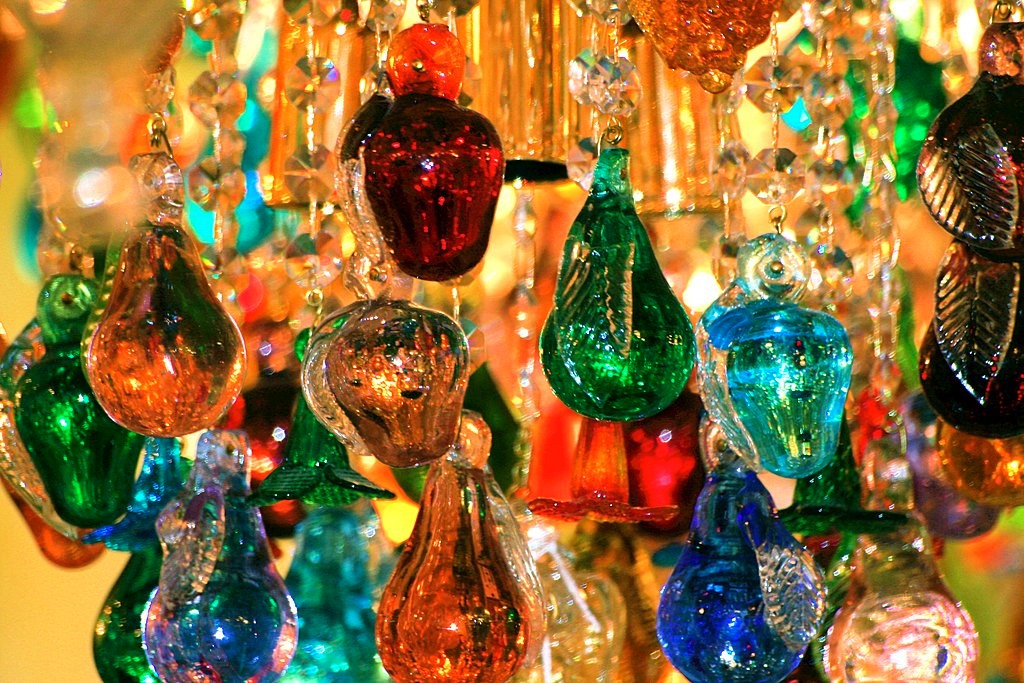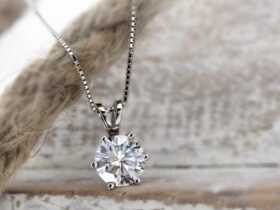Murano glass is one of the most beautiful and unique types of glassware in the world. It is also steeped in an enchanting and fascinating history. Originating in the Venetian lagoon in the mid-13th century, Italian Murano glass jewellery has been an Italian icon for centuries and is still highly sought-after by art and design aficionados around the world. In this blog post, we will take a glimpse into the captivating history of Italian Murano glass beads, necklaces and others, exploring its origin, evolution, and modern-day significance.
Early Beginnings: How it all started
The enchanting story of Murano glass dates to the year 1291 when the Venetian government decided to move all glass-making activities to the Venetian island of Murano. This decision was made to prevent any potential fires that could spread throughout the city and destroy valuable buildings. It also allowed for the knowledge and techniques of making Murano glass to be closely guarded secrets.
Murano glass is known for its unique colours, intricate designs, and masterful workmanship. For many centuries, Murano was the epicentre of glass production in Europe. With the guidance of experienced artisans, Murano glassmakers developed a wide range of techniques and styles that remain in use today. From hand-blown and shaped pieces to intricate engravings and filigree, Murano glass has become a timeless art form.
In the 14th century, many of the most talented Murano glassmakers were sent to other countries to spread their craft. Over time, their methods have been adapted and perfected by craftsmen across the world. Today, Murano glass can be found everywhere from ancient churches to modern luxury homes.
The long history of Murano glassmaking is what makes it so special and treasured by art collectors and connoisseurs alike. It is an art form that has spanned generations, evolving and adapting along the way.
The Golden Age: When Murano glass was at its peak
Murano glass was once the undisputed leader of luxury glass in the world, and the peak of its production and popularity occurred in the 15th century. During this time, Murano artisans were renowned for their highly skilled techniques and their ability to create intricate pieces of glass that incorporated vibrant colours and delicate patterns. These incredible pieces were made even more desirable due to the special blend of minerals used to create them.
The Venetian government had a keen interest in protecting these secrets and preventing competitors from copying their work, so they passed a law in 1291 that forbade glassmakers from taking their secrets with them when they left the island. This ensured that only those who had trained in Murano would have access to the unique materials and techniques used to create Murano glass.
Modern Renaissance: How Murano glass is making a comeback
Murano glass has been around for centuries and was once considered to be the pinnacle of Italian craftsmanship. However, as time passed, the art of Murano glass was slowly forgotten and began to fade away. Now, however, Murano glass is making a comeback and is becoming increasingly popular. This is largely due to the modern revival of Venetian culture, with a renewed appreciation for traditional Italian craftsmanship.
The resurgence of Murano glass can be attributed to its modern applications. Thanks to the advancement in technology, Murano glass is now easier than ever to work with, allowing it to be used in more creative and innovative ways. For example, many contemporary artisans are using the unique properties of Murano glass to create bold and unique sculptures and artwork. Additionally, Murano glass is being used to make sophisticated lighting fixtures, beautiful jewellery pieces, and ornate home decor items.
Tips for spotting fake Murano glass
Authentic Murano glass is known for its intricate designs, vibrant colours, and distinctive patterns. Unfortunately, with the growth of the market for high-end glassware, there has been an increase in the number of fraudulent pieces masquerading as genuine Murano glass. Here are some tips to help you avoid purchasing fake Murano glass:
- Look for the logo – Most authentic Murano glass pieces will have a signature logo on them, usually in the form of an ‘M’ or a crest.
- Check the surface – Genuine Murano glass will have a slightly rough texture when touched. Fake pieces tend to be much smoother, which can often indicate that it is not made from the right material.
- Inspect the quality of the colours – Authentic Murano glass pieces will often have a deep, rich colour that doesn’t fade over time. Fake pieces usually have much lighter colours and can even appear faded.
- Examine the weight – Genuine Murano glass pieces will be heavier than fake pieces due to the unique composition of glass used to create them.
- Request a certificate of authenticity – This document will provide proof that your piece is genuine Murano glass.
By following these tips, you can make sure that you are purchasing an authentic Murano glass piece and avoiding any fakes!
How to care for your Murano glass
Taking care of your Murano glass pieces is essential if you want them to stay in pristine condition for years to come. Since Murano glass is delicate and susceptible to damage, it’s important to know how to properly clean and store it. Here are a few tips on how to properly care for your Murano glass:
- Cleaning: To clean Murano glass pieces, use only lukewarm water and mild dish detergent. Avoid using abrasive cloths or chemicals, as these can cause discolouration or scratches. When cleaning your Murano glass, use a soft, damp cloth and gently rub the piece in a circular motion. Then, rinse off the soap with lukewarm water and dry the piece with a soft, lint-free cloth.
- Storing: To store your Murano glass pieces, make sure they’re kept away from direct sunlight and extreme temperatures. Make sure to store them in a cool, dry place, away from humidity and dust. You can also use special cases or boxes lined with velvet or acid-free tissue paper to protect your glass from any potential damage.
- Displaying: When displaying your Murano glass pieces, make sure to place them away from sources of heat, such as radiators or other heat sources. Avoid placing them in direct sunlight and keep them away from any sharp objects or furniture that could cause damage.










